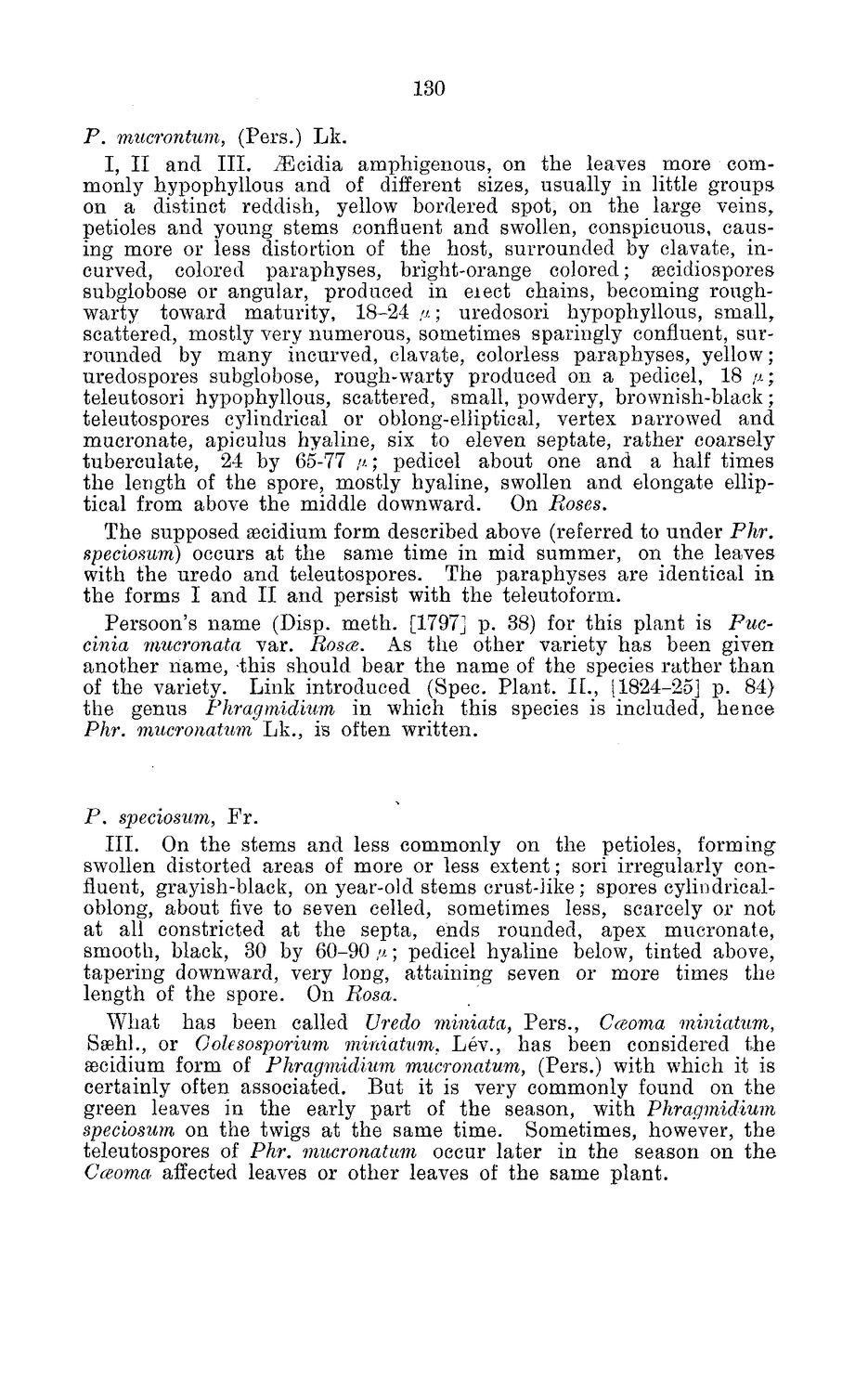| |
| |
Caption: Board of Trustees Minutes - 1884
This is a reduced-resolution page image for fast online browsing.

EXTRACTED TEXT FROM PAGE:
130 P. mucrontum, (Pers.) Lk. I, II and III. iEcidia amphigenous, on the leaves more commonly hypophyllous and of different sizes, usually in little groups on a distinct reddish, yellow bordered spot, on the large veins, petioles and young stems confluent and swollen, conspicuous, causing more or less distortion of the host, surrounded by clavate, incurved, colored paraphyses, bright-orange colored; secidiospores subglobose or angular, produced in elect chains, becoming roughwarty toward maturity, 18-24 //; uredosori hypophyllous, small, scattered, mostly very numerous, sometimes sparingly confluent, surrounded by many incurved, clavate, colorless paraphyses, yellow; uredospores subglobose, rough-warty produced on a pedicel, 18 f±; teleutosori hypophyllous, scattered, small, powdery, brownish-black; teleutospores cylindrical or oblong-elliptical, vertex narrowed and mucronate, apiculus hyaline, six to eleven septate, rather coarsely tuberculate, 24 by 65-77 v; pedicel about one and a half times the length of the spore, mostly hyaline, swollen and elongate elliptical from above the middle downward. On Roses. The supposed aecidium form described above (referred to under Phr. speciosum) occurs at the same time in mid summer, on the leaves with the uredo and teleutospores. The paraphyses are identical in the forms I and II and persist with the teleutoform. Persoon's name (Disp. meth. [1797] p. 38) for this plant is Puccinia mucronata var. Roses. As the other variety has been given another name, this should bear the name of the species rather than of the variety. Link introduced (Spec. Plant. IL, [1824-25] p. 84) the genus Phragmidium in which this species is included, hence Phr. mucronatum Lk., is often written. P. speciosum, Fr. III. On the stems and less commonly on the petioles, forming swollen distorted areas of more or less extent; sori irregularly confluent, grayish-black, on year-old stems crust-iike; spores cylindricaloblong, about five to seven celled, sometimes less, scarcely or not at all constricted at the septa, ends rounded, apex mucronate, smooth, black, 30 by 60-90 >i; pedicel hyaline below, tinted above, tapering downward, very long, attaining seven or more times the length of the spore. On Rosa. What has been called Uredo miniata, Pers., Cceoma miniatum, Ssehl., or Oolesosporium miniatum. Lev., has been considered the aecidium form of Phragmidium mucronatum, (Pers.) with which it is certainly often associated. But it is very commonly found on the green leaves in the early part of the season, with Phragmidium speciosum on the twigs at the same time. Sometimes, however, the teleutospores of Phr. mucronatum occur later in the season on the Cceoma affected leaves or other leaves of the same plant.
| |